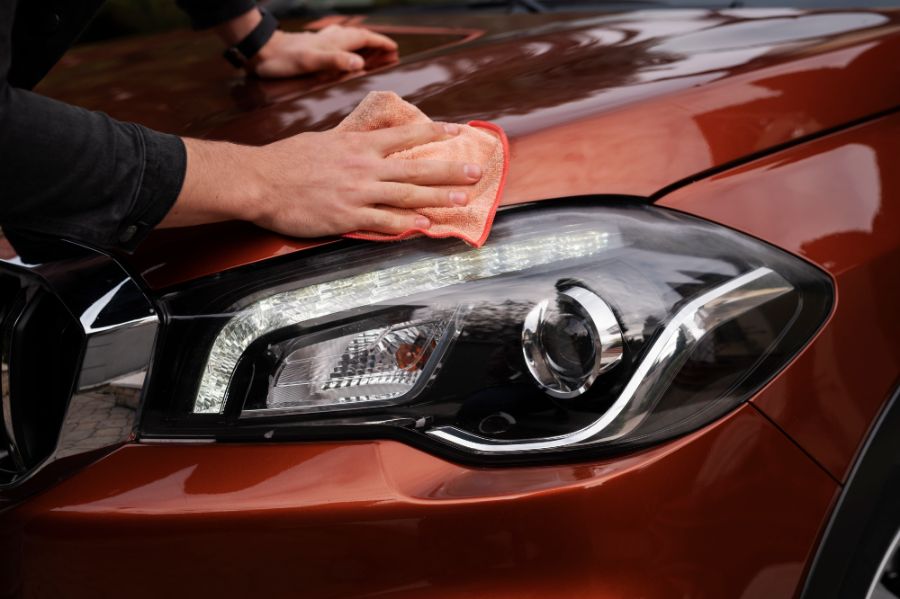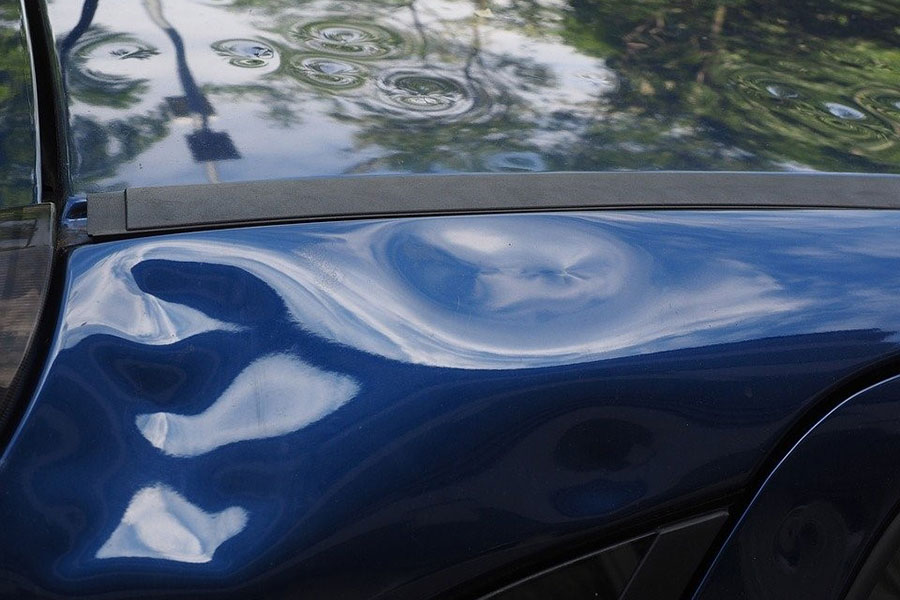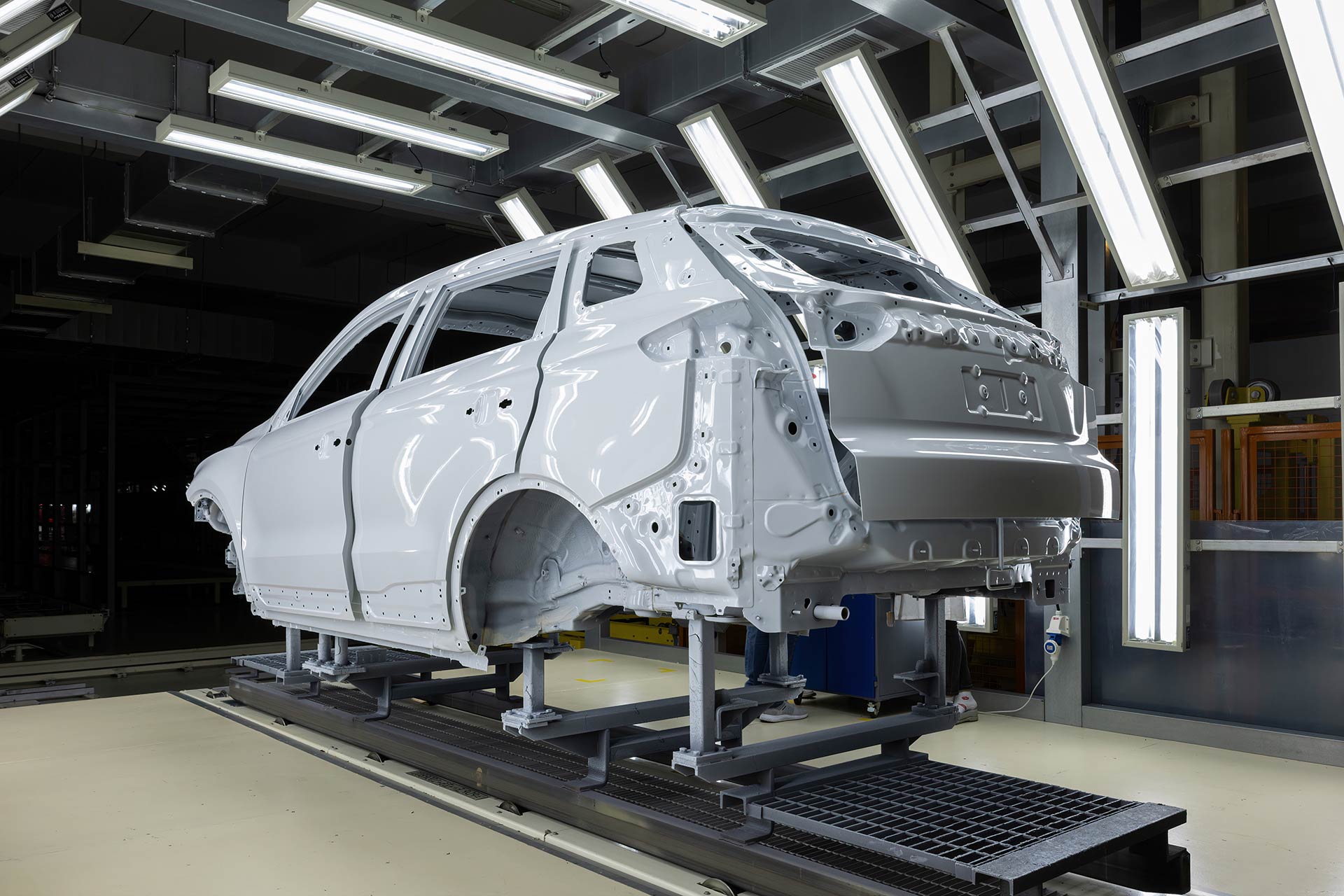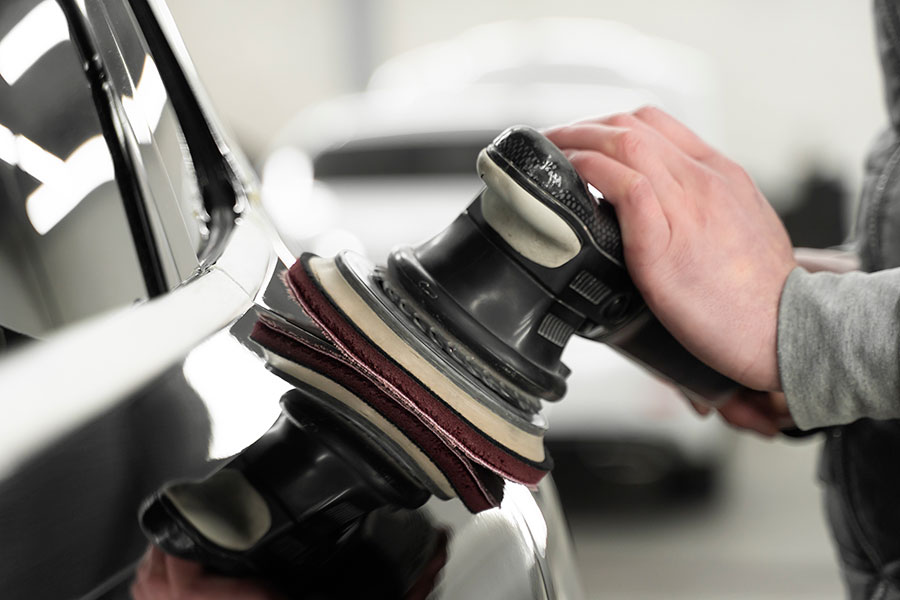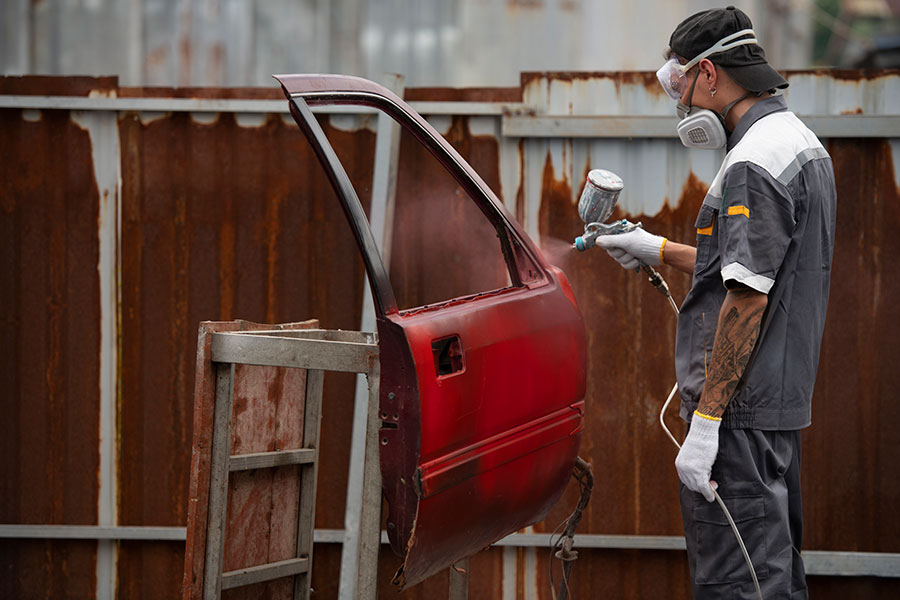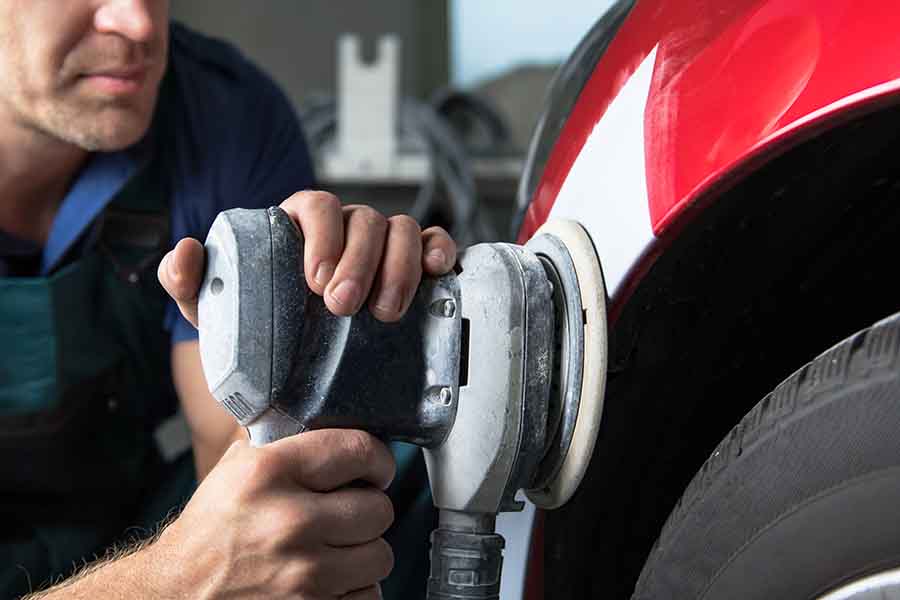Hail storms, a common but unpredictable force of nature, can wreak havoc on homes and vehicles, leaving behind a trail of destruction. For centuries, communities have sought ways to recover from these icy assaults, evolving from simple patchwork to today’s sophisticated hail damage repair techniques. In the modern era, repairing hail damage has become a blend of art and science, employing advanced tools and methodologies to restore property to its pre-storm condition. This blog post dives into the essentials of hail damage repair, offering insights into how professionals tackle the aftermath of a hail storm. From identifying roof damage to choosing the right repair method, this article covers what you need to know about costs and the best way to navigate the repair process smoothly.
Understanding Hail Damage
Types of Damage
Hailstorms can wreak havoc on vehicles and roofs, leaving behind a trail of destruction that varies based on the intensity of the storm, leading people to estimate costs and contact their insurance company. The types of damage commonly seen range from dings and dents to more severe cracks.
Vehicles often bear the brunt of hail's fury. The impact can leave small dings in the bodywork or larger dents, depending on the hail's size. Roofs are not spared either. Asphalt shingles can crack under the force of hail, prompting people to contact their insurance company for the repair process, while metal roofs might only show dents.
Hail Size Impact
The size of hail plays a crucial role in determining the extent of damage. Small hailstones, though numerous, might only cause minor cosmetic issues for people and their insurance company. However, larger hailstones, sometimes as big as golf balls or even tennis balls, can cause significant damage.
The duration of the hailstorm also matters. A short-lived storm might not have enough time to inflict much harm, but a prolonged assault can lead to extensive damage. It's not just about size; the longer the storm lasts, especially with elite hail systems, the more likely it is to cause serious problems.
Quick Assessment
After a hailstorm, it's vital to assess the damage quickly. Delaying this process can lead to further complications, especially if water finds its way into cracks and crevices, exacerbated by elite hail. This can result in leaks and structural damage over time.
For vehicles, a quick check by a professional can help determine if there are any urgent repairs needed to prevent rust or further deterioration. For roofs, an inspection can reveal hidden damages that might worsen if not addressed promptly. Elite hail systems specialize in assessing and repairing such damages efficiently.
Preparing for Repair
Documentation Gathering
Gather all necessary documents right after a hailstorm hits. This includes taking clear photos of the damage. These images show the extent of the dents on the body panels and roof. It's crucial for insurance claims.
Insurance companies need these photos to assess the damage. They help in determining how much repair work is needed. Make sure to document every affected area, including minor dents.
Temporary Protection
Covering damaged areas is a must to prevent further issues. Use waterproof covers to shield the exposed parts. This step is vital until repairs begin.
Rain or more hail can worsen the condition if left unprotected. Secure the covers well to ensure they stay in place, especially during strong winds.
Shop Research
Finding the right body shop for repairs is key. Look for places with hail damage repair expertise. They should know how to bring vehicles back to their original shape without fault.
Ask friends or search online for reviews on local shops. Pay attention to those that specialize in dent repair and paint work. Experience with hail damage means they understand how to handle your vehicle’s specific needs.
Insurance Coordination
Contact your insurance adjuster as soon as possible. They will evaluate the damage and guide you through the claim process. Be prepared to provide the documentation you've gathered.
Choose a repair shop that works well with insurance companies. Some shops even handle all communication with the adjuster, making your life easier.
Quality Check
Ensure the shop uses techniques that maintain your vehicle's factory condition. This includes using proper tools for dent repair and matching paint perfectly. The goal is to restore your car without any signs of previous damage.
Ask about warranties on their work. A reputable shop stands by their job quality, offering peace of mind post-repair.
Initiating Insurance Claims
Contact Provider
After preparing for repair, the next crucial step is to contact your insurance provider. This should be done immediately after noticing hail damage. It's essential to report the incident promptly to start the claims process.
Insurance companies require a detailed account of the damage. They will guide you on the next steps, which often include documenting the damage. This documentation is vital for the claims process. It serves as proof and helps in getting an accurate initial estimate of repair costs.
Claims Process
Understanding the claims process is key to a smooth experience. Each insurance company has its own procedure, but most follow a similar path. After reporting the damage, you'll likely need to fill out claim forms and provide photos or other evidence of the hail impact.
The insurance company will assign a claims adjuster to assess the damage. They determine if your policy covers the repairs and calculate an initial estimate of costs. This process can take a few days to several weeks, depending on the complexity of your case and the volume of claims the company is handling.
Coverage Specifics
Inquiring about coverage specifics for hail damage is crucial. Not all policies cover hail damage, so it's important to know what your comprehensive coverage includes. Comprehensive coverage typically protects against non-collision incidents like hail storms, but deductibles apply.
Ask about what parts of the repair are covered and if there are any limitations or exclusions. Understanding your coverage helps manage expectations and prepares you for potential out-of-pocket expenses.
Deductible and Costs
The deductible is a part of the repair cost you're responsible for before your insurance coverage kicks in. Knowing your deductible amount helps you plan financially for the repair process.
Insurance settlements may not always cover all repair costs. In some cases, extra costs emerge during repairs that were not included in the initial estimate. It's wise to have savings set aside for such situations or inquire about payment options with your repair shop.
Navigating insurance claims after hail damage can be daunting, but being proactive and informed makes it manageable. By understanding your policy, staying organized with documentation, and communicating effectively with both your insurance company and repair shop, you can ensure a smoother claim process and repair journey.
Choosing Repair Techniques
Repair Options
After initiating an insurance claim, picking the right repair technique is crucial. Two primary methods stand out: traditional dent repair and Paintless Dent Repair (PDR). Traditional methods often involve sanding, filling, and repainting the affected area. This can be effective but might not match the original paint perfectly.
On the other hand, PDR is a more innovative approach. Technicians use special tools to gently massage dents from the inside of the panel. This preserves the original paint and is less invasive.
PDR is not only quicker but often more cost-effective than traditional methods. However, its success largely depends on the dent's location and severity.
Severity and Location
The damage's nature greatly influences the choice of repair technique. Minor dents with no paint damage are ideal candidates for PDR. This method works best on accessible areas where technicians can easily reach the dent from behind.
For severe damage or areas hard to access, traditional repair might be necessary. It's also the go-to option when there's significant paint damage. In such cases, ensuring a color match becomes a priority to maintain the vehicle's appearance.
Vehicle Value
Choosing between PDR and traditional repairs affects more than just your car's looks. It can also impact its long-term value and integrity. PDR maintains the original paintwork, which is a significant factor in preserving a vehicle's resale value. Since it's less invasive, there's less risk of future issues related to the repair, like paint peeling or color mismatching.
Traditional repairs, while effective for severe damage, can sometimes decrease a vehicle's value. This is especially true if the paint doesn't match perfectly or if the filler material deteriorates over time.
Booking Repair Services
Service Selection
After deciding on the repair technique, it’s crucial to schedule an appointment with a reputable service. Companies like Service King specialize in hail damage and offer comprehensive solutions.
They use a detailed pricing matrix to estimate costs accurately. This ensures customers know what to expect financially. It’s wise to compare different services based on their expertise and cost-effectiveness.
Appointment Scheduling
Once you choose a company, the next step is to book your repair session. During this process, ask about the estimated repair time. This information helps plan whether you need a rental car while yours is in the shop. Some businesses may even assist with rental arrangements, easing the inconvenience.
Rental Arrangements
If the repair will take several days, securing a rental car becomes essential. Inquire if the service you selected offers assistance with rentals. Some companies have partnerships with rental agencies, potentially offering discounted rates or direct billing options.
Warranty Inquiry
It’s also important to ask about warranties or guarantees on the work performed. A reliable business should stand behind their repairs with a solid warranty. This provides peace of mind, knowing that if issues arise later, they’ll be addressed without additional costs.
Cost Considerations
Discussing the cost upfront avoids surprises later on. The pricing matrix used by services like Service King can give a clear idea of the expenses involved. Some companies offer financing options or payment plans for more extensive repairs, making it easier to manage financially.
Repair Kits
For minor damages, some services might recommend DIY repair kits. These panels and kits can be a cost-effective solution for small dents and dings caused by hail. However, for more severe damage, professional repairs are advisable to ensure quality and durability.
Choosing the right service for hail damage repair involves considering several factors including expertise, cost, and convenience. By following these steps, you can ensure your vehicle is restored to its pre-damage condition efficiently and effectively.
Managing Repair Process
Regular Updates
After booking repair services, staying informed is crucial. It's important to communicate regularly with the repair shop. This ensures you're up to date on the progress of your hail damage repair.
You should expect to receive updates from the service provider. They can come through calls, emails, or a dedicated customer portal. If updates are not forthcoming, don't hesitate to reach out. Staying proactive keeps you in the loop and may influence the speed and quality of the repair work.
Inspection Quality
Once the repair work nears completion, inspecting the quality becomes your next step. It’s vital to check the repairs thoroughly before accepting your vehicle back. Look for any missed damages or areas that might not meet your expectations.
A detailed inspection ensures that all hail damage has been addressed according to the agreed terms. If possible, compare the post-repair condition with pre-damage photos or descriptions. This comparison helps in identifying any discrepancies with ease.
Addressing Concerns
If you find any issues during your inspection, it's essential to address these concerns immediately with the service provider. Clear communication about what doesn't meet your expectations is key. Most reputable repair shops will be willing to make necessary adjustments to ensure customer satisfaction.
Don't shy away from pointing out issues, no matter how small they may seem. It's better to resolve any problems before accepting your vehicle back than discovering them later, when recourse might be more complicated.
PDR Pricing Matrix
Understanding the PDR (Paintless Dent Repair) pricing matrix can also be part of managing the repair process effectively. This pricing matrix outlines various factors that determine the cost of repairs, including dent size, location, and number of panels affected.
Post-Repair Tips
Care Instructions
After managing the repair process, it's crucial to maintain the repaired areas properly. This ensures their longevity and keeps your vehicle in top condition.
First, follow any specific care instructions provided by the repair shop. These might include avoiding washing the car for a certain number of days or keeping it out of direct sunlight for a period. Sun exposure can affect the new paint and repaired areas differently than the rest of the vehicle, especially in the first few years after repair.
Second, apply a protective wax or sealant to the repaired spots. This adds an extra layer of protection against the elements, including sun damage, which can prematurely age the repairs.
Record Keeping
Keeping detailed records is another vital step post-repair.
Document every aspect of the repair work, including the date, description of the damage, and details of the repairs done. Include before and after photos if possible. This documentation is invaluable for future reference, especially if issues arise from the repair work.
These records are also essential for resale purposes. They provide transparency to potential buyers about the vehicle's history and assure them that professional repairs were made.
Monitoring Repairs
Over time, it’s important to monitor the repair site for signs of wear or failure.
Regularly inspect the area for any changes in texture, color, or appearance. This could indicate that the repair is not holding up as expected and may need attention.
Pay special attention to how the repaired sections react to weather changes and exposure to sunlight over the years. Any sign of deterioration should prompt a visit to your repair technician to address potential issues before they worsen.
Common Repair Questions
Repair Costs
Many people worry about the costs of hail damage repair. It's important to know that prices can vary widely. The cost often depends on the severity of the damage and the type of vehicle you have.
Most insurance policies cover hail damage, but everyone should check their deductible. This is the amount you pay before your insurance starts paying. Sometimes, the deductible might be higher than the repair cost itself.
Insurance Deductibles
Dealing with insurance can confuse many people. Not every policy treats hail damage the same way. You need to understand your policy's specifics.
Always contact your insurance company right after noticing hail damage. They will guide you through the process and tell you what they need. Remember, filing a claim sooner rather than later is always better.
Repair Misconceptions
There are several misconceptions about hail damage repair that need clearing up. First, not all damage requires a full paint job. Many times, paintless dent repair (PDR) is an effective solution.
Second, a quality repair should leave your car looking as good as new. If someone tells you to expect less, look elsewhere. High standards in repair are not only possible but should be expected.
Choosing a Service
When it comes to choosing a repair service, reliability and trustworthiness are key. Look for services with good reviews and a strong reputation in your community.
Beware of "storm chasers," or repair services that appear after severe weather events offering quick fixes at low prices. These offers can be tempting but often lead to poor-quality work and more problems down the road.
Avoiding Scams
Unfortunately, scams are something everyone needs to be aware of after hail storms. A common red flag is when services ask for payment upfront before any work is done.
To avoid scams, seek out established local businesses with good track records. Always ask for references and don’t hesitate to verify them.
Summary
You've walked through the nuts and bolts of hail damage repair, from spotting the signs to sealing the deal with top-notch repairs. It's a journey, sure, but now you're equipped with the know-how to tackle it head-on. Choosing the right repair technique and service can turn a headache into a hiccup. Stick to the plan—prepare, claim, choose, book, manage, and follow up. You've got this.
Remember, your car's resilience is in your hands. Don't let hail damage put a dent in your day or your pocket. Act swiftly, choose wisely, and keep those post-repair tips in your back pocket. Ready for smooth sailing—or should we say driving? Hit up a trusted repair service today and get back on the road hassle-free. Your ride deserves it, and so do you.
Frequently Asked Questions
How do I know if my car has hail damage that requires professional repair?
Look for dents, dings, or chips on the surface. If you find multiple impacts or any damage that compromises the vehicle's finish, it's time to consult a professional.
What steps should I take before repairing hail damage on my car?
Document the damage with photos, check your insurance policy for coverage details, and get multiple repair estimates from reputable shops.
How do I initiate an insurance claim for hail damage?
Contact your insurance provider as soon as possible to report the hail damage. Follow their process for filing a claim, which usually involves submitting evidence of the damage and obtaining repair quotes.
What are the common techniques used for hail damage repair?
Paintless dent repair (PDR) is a popular and effective technique for fixing small dents without damaging the paint. For more severe damage, traditional body repair may be necessary.
How do I choose a reliable hail damage repair service?
Look for services with positive reviews, certifications, and a guarantee on their work. Experience in hail damage repair is also a crucial factor.
What should I expect during the hail damage repair process?
Expect to leave your car with the service for the duration of repairs, which can vary depending on the extent of damage. Communication about progress and any additional issues discovered is key.
Are there any maintenance tips after getting hail damage repaired?
Regularly wash and wax your car to protect the new paint or finish. Also, consider using a car cover or parking in sheltered areas to prevent future hail damage.
What are some common questions people have after hail damage repair?
Many wonder about maintaining their car's value and appearance post-repair. It’s important to follow up with regular inspections and maintain good care habits to ensure lasting results.

